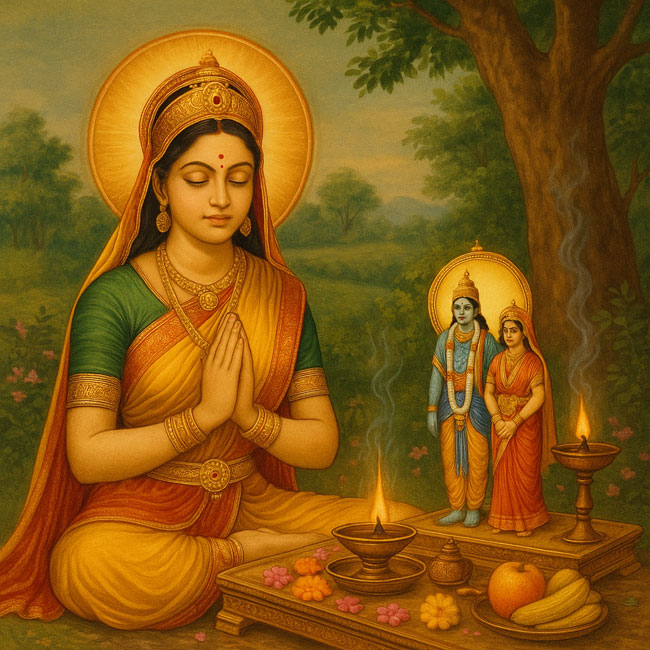 This year, the festival of Sita Navami will be celebrated in the month of May. Sita Navami is also known as Sita Jayanti. It is observed every year on the Navami Tithi (ninth day) of the Shukla Paksha (waxing phase of the Moon) in the month of Vaishakha. According to religious beliefs, Sita Navami marks the birth anniversary of Goddess Sita. It is believed that performing special worship of Maa Sita on this day brings prosperity and happiness. Let’s find out the date, puja method, and auspicious timing (muhurat) for Sita Navami this year:
This year, the festival of Sita Navami will be celebrated in the month of May. Sita Navami is also known as Sita Jayanti. It is observed every year on the Navami Tithi (ninth day) of the Shukla Paksha (waxing phase of the Moon) in the month of Vaishakha. According to religious beliefs, Sita Navami marks the birth anniversary of Goddess Sita. It is believed that performing special worship of Maa Sita on this day brings prosperity and happiness. Let’s find out the date, puja method, and auspicious timing (muhurat) for Sita Navami this year:
Date of Sita Navami:
According to the Drik Panchang, the Chaturthi Tithi of Shukla Paksha in Vaishakha month will begin on May 5, 2025, at 7:35 AM and will end on May 6, 2025, at 8:38 AM.
The Sita Navami Madhyahna Muhurat (midday auspicious time) will be from 10:58 AM to 1:38 PM, lasting for 2 hours and 40 minutes.
The exact Madhyahna moment will occur at 12:18 PM.
Puja Vidhi (Worship Method):
On the day of Sita Navami, wake up early in the morning, take a bath, and wear clean clothes. Purify the worship area by cleaning it and sprinkling it with Gangajal (holy water from the Ganges). Install idols or pictures of Lord Rama and Goddess Sita. Offer roli (red powder), sandalwood paste, rice grains, flowers, fruits, sweets, incense sticks, and lamps to the deities. Recite the Sita Navami Vrat Katha (the story associated with the fast). After that, perform Aarti (ritual of worship with lighted lamps) for Maa Sita and Lord Rama. Observe a fast and remain devoted to God throughout the day. In the evening, perform another round of worship and distribute prasadam (blessed food) among others.
Story Behind Sita Navami:
According to the Valmiki Ramayana, once a severe drought struck the kingdom of Mithila, causing great distress to King Janaka. To overcome this crisis, a sage advised the king to perform a yajna (ritual sacrifice) and to plow the earth himself. Following the sage’s advice, King Janaka organized a yajna and then personally plowed the land. While plowing, his plough struck an object buried in the ground. Upon clearing the soil, he discovered a beautiful baby girl inside a golden casket. As soon as King Janaka lifted the baby girl in his hands, heavy rains began to pour, ending the drought. The king named the girl Sita and adopted her as his own daughter.




